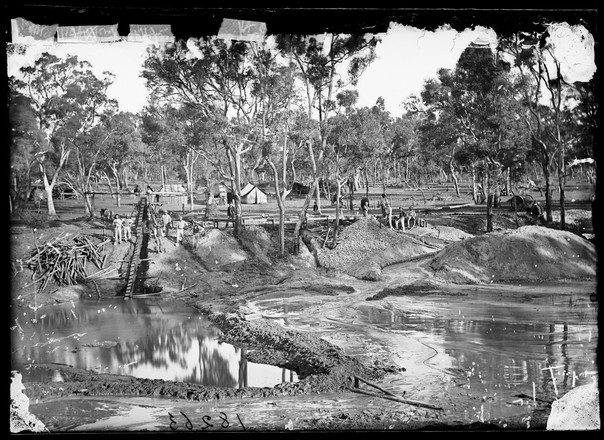
Gold sluice and tailings on the river, probably Home Rule (?)
1872
Glass photonegative
Glass photonegative
If running water was available, the most efficient method of separating gold from washdirt was to process it through a sluice or ‘long tom’. The running water broke up the paydirt and washed away the lighter sands and gravel, leaving the gold caught in the horizontal strips of wood called ‘riffles’ built across the sluice box.


 Back to list
Back to list